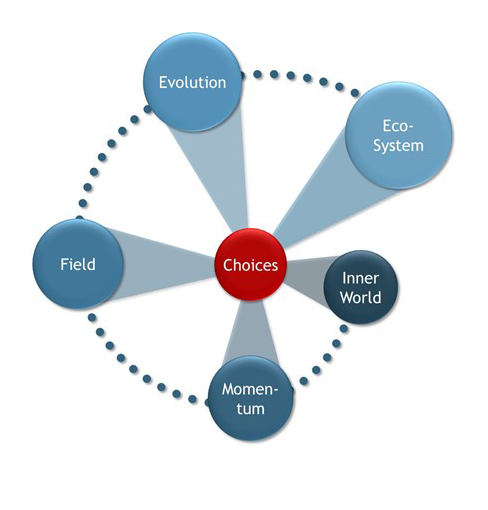Spiral Leadership Development
According to the Harvard Business Review, 50% of senior leaders believe that their current talent development efforts do not adequately build critical skills and organizational capabilities for their future leaders. Why is this? Corporate learning & development curricula typically address the more classical functional and to a smaller degree the so-called “soft” skills. While this is important and relevant, it is oftentimes not enough to move the needle when it comes to developing the leaders of tomorrow.
At Leadership Choices, we have a holistic understanding of leadership development. We see it more as a way of realizing your full potential than learning a set of techniques. The key to becoming an effective leader is to learn how to win people’s trust and make them follow you because of your humility, integrity, and authenticity. This requires deep listening and empathy for the people you are leading. It requires you to be able to hold opposing viewpoints inside of you and refraining from “Black-and-White-Thinking” when making decisions. It requires superior levels of both self-awareness and self-management. As you become more impactful in your professional development, being an effective leader also means developing a reliable ethical compass that helps you navigate when the corporate rules are blurred. All of this requires growth in multiple dimensions. We have articulated our understanding of this developmental process in the model SPIRAL LEADERHIP DEVELOPMENT.
In our learning journeys, we are combining intellectual stimuli, colliding perspectives, deep personal reflection, and networking with other leaders in a safe space where personal growth can happen. We call this our coaching mindset. Introducing the Academy of Choices, our open enrollment offering that takes a different approach to learning – we are coaches, sources of inspiration, and we will ask you the critical questions that no one dares to ask.
We have articulated our understanding in the model SPIRAL LEADERHIP DEVELOPMENT. It consists of the following steps:
Choices: How do you evolve on the inside?
As leaders develop in their career, they gain more impact. They also grow in terms of experience. The key question is if they also evolve on the inside in terms of their ego, their value system and their action logics. For all leaders, vertical development is a conscious choice that requires inner work.
Inner World: How do you improve resilience?
Pressure, conflicts and setbacks are part of a leader's daily life. If one is effective in such an environment depends on the leader’s ability to instill trust and generate followership in others. Effective leaders have to learn strategies in terms of self-management and self-awareness to help them excel in this.
Momentum: How do you get a seat at the table?
Before Leaders get into position, they first need to stand out in order to be recognized and trusted by others. This requires a positive mindset, the ability to build rapport and a lot of tenacity and hard work. Effective leaders have to become aware of their brand and learn how to network and how to communicate effectively.
Field: What is your leadership signature?
Bringing different people together and turning them into a winning team is key for effective leaders. This requires empathy and the willingness to adapt one's leadership behavior both to the needs of the people you are leading and to the context you are leading in. Effective leaders must understand their leadership signature and learn how to evolve it.
Evolution: How do you evolve an organization?
Effective leaders learn how to rise to new challenges. And they learn how to do the same with entire organizations. But how can a leader impact the competence, culture or the Raison d'Être of a company? Understanding organizational systems and their dynamic is key for this development step.
Eco-System: How to be in tune with your context?
Organizations and their leaders are part of a market, of a society and also part of ecology. This eco-system influences an organization and vice versa. Effective leaders learn how to improve the longevity, adaptability and robustness of their entire organization by interacting positively with the eco-system around them.
